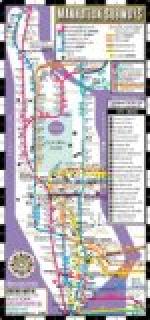The proposed operation contemplates a possible maximum of two tracks loaded with local trains at one minute intervals, and two tracks with eight car express trains at two minute intervals, the latter class of trains requiring at times as much as 2,000 horse power for each train in motion. It is readily seen, then, that combinations of trains in motion may at certain times occur which will throw enormous demands for power upon a given section of the road. The electricity conveying this power flows back through the track rails to the power station and in so doing is subject to a “drop” or loss in the rails which varies in amount according to the power demands. This causes disturbances in the signal-track circuit in proportion to the amount of “drop,” and it was believed that under the extreme condition above mentioned the ordinary form of track circuit might prove unreliable and cause delay to traffic. A solution of the difficulty was suggested, consisting in the employment of a current in the signal track circuit which would have such characteristic differences from that used to propel the trains as would operate selectively upon an apparatus which would in turn control the signal. Alternating current supplied this want on account of its inductive properties, and was adopted, after a demonstration of its practicability under similar conditions elsewhere.
[Illustration: FRONT VIEW OF BLOCK SIGNAL POST, SHOWING LIGHTS, INDICATORS AND TRACK STOP]
After a decision was reached as to the system to be employed, the arrangement of the block sections was considered from the standpoint of maximum safety and maximum traffic capacity, as it was realized that the rapidly increasing traffic of Greater New York would almost at once tax the capacity of the line to its utmost.
The usual method of installing automatic block signals in the United States is to provide home and distant signals with the block sections extending from home signal to home signal; that is, the block sections end at the home signals and do not overlap each other. This is also the arrangement of block sections where the telegraph block or controlled manual systems are in use. The English block systems, however, all employ overlaps. Without the overlap, a train in passing from one block section to the other will clear the home signals for the section in the rear, as soon as the rear of the train has passed the home signal of the block in which it is moving. It is thus possible for a train to stop within the block and within a few feet of this home signal. If, then, a following train should for any reason overrun this home signal, a collision would result. With the overlap system, however, a train may stop at any point in a block section and still have the home signal at a safe stopping distance in the rear of the train.
Conservative signaling is all in favor of the overlap, on account of the safety factor, in case the signal is accidentally overrun. Another consideration was the use of automatic train stops. These stops are placed at the home signals, and it is thus essential that a stopping distance should be afforded in advance of the home signal to provide for stopping the train to which the brake had been applied by the automatic stop.




